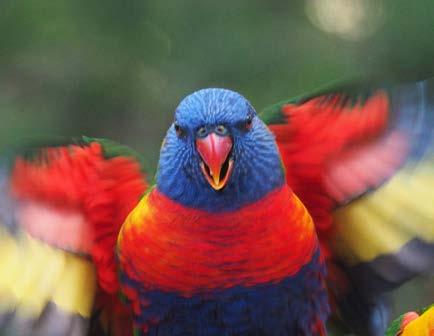
3 minute read
Birds in Lane Cove gardens
WORDS: SUE INGHAM
We are so lucky to have remnant bushland in Lane Cove and birds visiting our gardens, but is it ‘natural’? Have you ever stopped to consider how our presence has altered the balance of nature and even the relationship between birds?
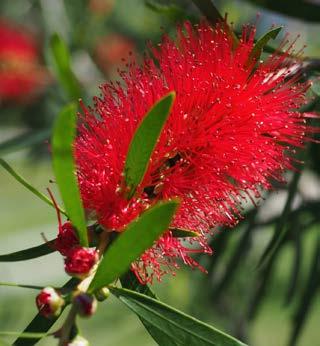
I have lived in Lane Cove since 1978 and even my untrained eye has noticed a change in the bird life in our garden. Birdlife Australia conducted an ‘Aussie Bird Count’ in October last year and concluded that the birds that they illustrated on their poster were the most numerous. Top of the list were the Rainbow Lorikeets for the ninth year in a row but missing from that list were small birds, apart from the introduced Sparrow.
Back in the 1980s I remember seeing Silvereyes and Wrens, the Superb Blue Wren flitting in and out of the low bushes, the female a plain brown but the male with spectacular blue flashes that apparently become more intense in the mating season. Why do we see so many Rainbow Lorikeets and don’t see the Wrens?
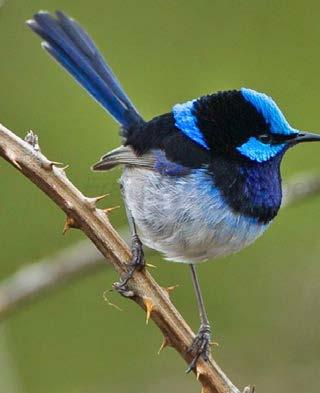
The answer is us – what we have made of our gardens. There are the obvious problems when pesticides and herbicides are used, predation by cats and disruption caused by noise and lighting. Pesticides not only harm the birds, they kill the bugs and insects the birds feed on, interrupting the whole food chain. It is a totally counter-productive action as small birds like Silvereyes are very efficient in removing the pests themselves. But there are other disruptions of nature that are less obvious.
As Lynne McLoughlin wrote in her book, “The Natural Environment of Lane Cove,” birds “…are not often considered as part of a functioning ecosystem in the bushland and the impact of our settlement on the birdlife is rarely realised.” There is a subtle balance between what we grow in our gardens and its effect on local birdlife. Different birds thrive in different environments and not only does a change in their environment affect them but those birds that adapt or benefit from that change may displace other birds.
In the early years of colonial Australia, gardens developed under the influence of European traditions that favoured flowering plants and swards of green lawns, but the latter can be like a desert to small birds. Birds like the Fairy Wren prefer thickets of shrubs and especially prickly plants that provide protection from predators and security for their nesting sites which are often no more than a meter or so off the ground.
We also introduced plants and weeds such as lantana, privet and camphor laurel that provided a food source for big birds such as the Currawongs. They have increased in number and they not only displace the smaller birds, they attack and eat their chicks. Similarly, the visiting Koel, a migratory cuckoo, also enjoys the berry-producing plants and has grown in numbers. Although you rarely see one, you can’t miss the call of a mating Koel at night with its whoopwhoop rising in intensity. The Koel appropriates the nest of other birds to lay their own eggs and once hatched, the Koel pushes the other chicks out in order for it to be fed by the host. Wattlebird nests are their favourite and when the Wattlebirds increased in number, it was of benefit to the Koel.
The Wattlebirds, like a number of other birds, prospered from a change in garden fashion to native plants, particularly flowering grevilleas, bottlebrush and gums that provided nectar. This also favoured the Noisy Minor which likes an open woodland with a limited understory in contrast to the bushes preferred by smaller birds. The Noisy Minors form large groups which so aggressively defend their territory, they are considered to have contributed to the decline of other native birds, such as Robins, Thornbills and smaller Honeyeaters.
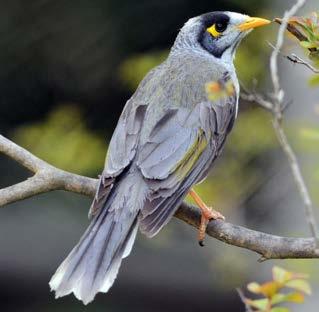
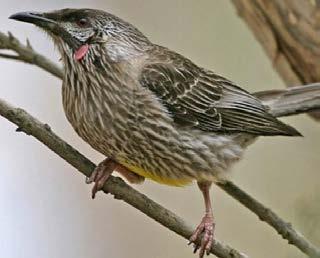
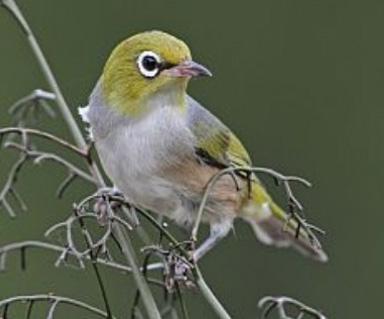
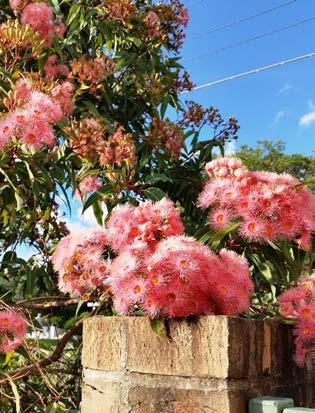
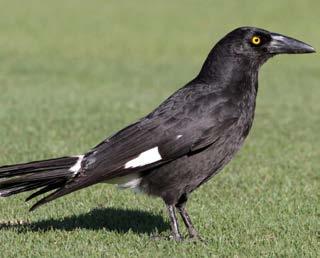
The great nectar eaters are the Rainbow Lorikeets and like all nectivorous birds, they help with pollination. They hang up-side-down in the trees to reach the flowers and transfer pollen from flower to flower. They are cheeky, intelligent and longlived: up to thirty years; and because we love their brilliant colours and enjoy them, we put out trays of seeds for them. They too have benefitted from our choice of flowering natives and because they are gang-birds and territorial, they displace other birds, especially in competition for nesting sites.
So because of our preferences in the garden, we end up with fewer Wrens and many Lorikeets.
Advice can be had to help with making gardens a more balanced and birdfriendly place. Lane Cove council runs a Backyard Habitat program: Backyard Habitat program and the Lane Cove Bushland & Conservation Society holds plant stalls in the Plaza twice a year. They provide advice and plants indigenous to Lane Cove: https://lanecovebushland.org.au/






